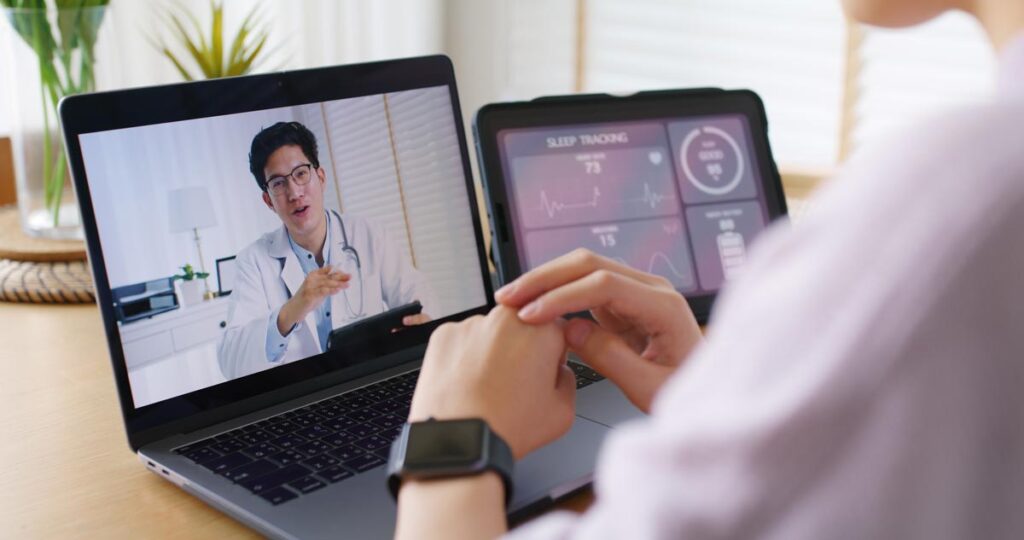Telehealth is reshaping how care is delivered—making it faster, easier, and more accessible. While it surged in popularity during the COVID-19 pandemic, the benefits of telehealth have proven to be long-lasting for both patients and providers.
From reducing barriers to care in rural areas to streamlining workflows for providers, telehealth technologies have created new opportunities across the entire healthcare system.
But to fully realize these benefits, healthcare organizations must focus on interoperability. This means making sure different platforms, systems, and providers can connect and share health information seamlessly. When telehealth services and interoperability work together, they create smarter, more efficient, and more person-centered care.
Let’s explore six key benefits of telehealth in healthcare, and why connecting systems matters just as much as delivering care.
1. Greater Access for Patients in Rural Areas
Many patients in rural areas face limited access to primary care and specialists. With telehealth visits, they can now get the care they need without hours of travel. Whether it’s a follow-up, a mental health check-in, or managing a chronic condition, patients can meet with a provider from home.
This expanded access improves outcomes and ensures no one is left behind due to geography. Providers can also grow their reach, supporting a larger and more diverse patient population.
2. Better Mental Health Support
The rise in telehealth technologies has helped reduce stigma and increase access to mental health care. Patients can connect with therapists, psychiatrists, or a nurse practitioner from a comfortable, familiar setting.
This convenience encourages more people to seek help and stick with treatment plans—especially younger individuals or those with busy schedules. For providers, it means more flexibility and fewer cancellations.
3. Improved Chronic Condition Management
Conditions like diabetes, high blood pressure, and heart disease require regular attention. Thanks to remote patient monitoring, providers can keep track of a patient’s vitals and symptoms in real time.
This data helps flag issues early, prevent hospitalizations, and guide better care plans. Providers benefit from a more complete view of each patient’s health without needing constant in-person visits.
4. More Efficient Provider Workflows
One of the biggest benefits of telehealth for providers is increased efficiency. Many routine appointments—like medication refills or quick check-ins—can be handled through virtual visits, saving time for both the patient and provider.
With proper interoperability, providers can also easily access patient records, test results, and notes from other care teams. This seamless flow of health information saves time, reduces duplicate work, and helps providers deliver faster, more coordinated care.

5. More Personalized and Convenient Care
What are the benefits of telehealth for patients? Convenience, personalization, and flexibility are at the top of the list.
Patients can:
- Skip the waiting room and connect from home or work
- Avoid taking time off or finding childcare
- Feel more comfortable discussing sensitive topics from a private setting
- Access care during evenings or weekends
This makes telehealth especially valuable for older adults, working parents, or individuals managing multiple health conditions.
6. Cost-Effective Care That Delivers Value
Telehealth services often reduce costs—for both patients and healthcare organizations. Without the need for physical space or as much administrative overhead, providers can offer care more efficiently.
Patients also avoid travel expenses and lost income from time off work. And with better monitoring and early intervention, expensive hospital stays or emergency visits can be avoided altogether.
By integrating predictive models and AI tools into telehealth, providers can also make smarter decisions and reduce unnecessary treatments.
Interoperability Makes It All Work
To fully unlock the benefits of telehealth, healthcare organizations must invest in interoperable systems. When EHRs, remote devices, and telehealth platforms work together, healthcare professionals gain a clearer picture of each patient’s needs.
This leads to more informed decisions, better coordination between teams, and ultimately, improved patient care. In a world where virtual care is here to stay, connected systems are key to delivering high-quality personal health experiences.
Telehealth is more than a trend—it’s a smarter, more accessible way to deliver care. And when supported by strong data connections and AI-enhanced tools, it becomes a powerful solution to today’s biggest healthcare challenges.
Curious to learn more? Let’s start a conversation



